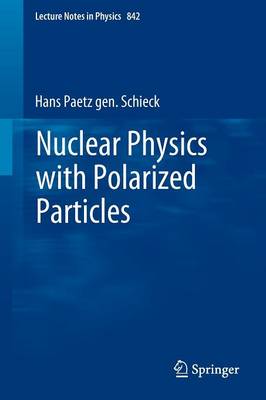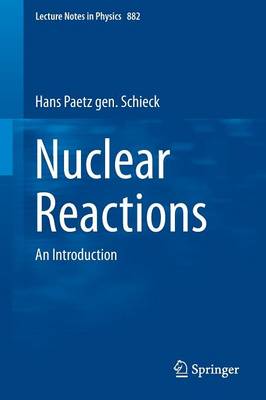Lecture Notes in Physics
2 primary works
Book 842
The measurement of spin-polarization observables in reactions of nuclei and particles is of great utility and advantage when the effects of single-spin sub-states are to be investigated. Indeed, the unpolarized differential cross-section encompasses the averaging over the spin states of the particles, and thus loses details of the interaction process. This introductory text combines, in a single volume, course-based lecture notes on spin physics and on polarized-ion sources with the aim of providing a concise yet self-contained starting point for newcomers to the field, as well as for lecturers in search of suitable material for their courses and seminars.
A significant part of the book is devoted to introducing the formal theory—a description of polarization and of nuclear reactions with polarized particles. The remainder of the text describes the physical basis of methods and devices necessary to perform experiments with polarized particles and to measure polarization and polarization effects in nuclear reactions. The book concludes with a brief review of modern applications in medicine and fusion energy research. For reasons of conciseness and of the pedagogical aims of this volume, examples are mainly taken from low-energy installations such as tandem Van de Graaff laboratories, although the emphasis of present research is shifting to medium- and high-energy nuclear physics. Consequently, this volume is restricted to describing non-relativistic processes and focuses on the energy range from astrophysical energies (a few keV) to tens of MeV. It is further restricted to polarimetry of hadronic particles.
Book 882
Nuclei and nuclear reactions offer a unique setting for investigating three (and in some cases even all four) of the fundamental forces in nature. Nuclei have been shown – mainly by performing scattering experiments with electrons, muons and neutrinos – to be extended objects with complex internal structures: constituent quarks; gluons, whose exchange binds the quarks together; sea-quarks, the ubiquitous virtual quark-antiquark pairs and last but not least, clouds of virtual mesons, surrounding an inner nuclear region, their exchange being the source of the nucleon-nucleon interaction.
The interplay between the (mostly attractive) hadronic nucleon-nucleon interaction and the repulsive Coulomb force is responsible for the existence of nuclei; their degree of stability, expressed in the details and limits of the chart of nuclides; their rich structure and the variety of their interactions. Despite the impressive successes of the classical nuclear models and of ab-initio approaches, there is clearly no end in sight for either theoretical or experimental developments as shown e.g. by the recent need to introduce more sophisticated three-body interactions to account for an improved picture of nuclear structure and reactions. Yet, it turns out that the internal structure of the nucleons has comparatively little influence on the behavior of the nucleons in nuclei and nuclear physics – especially nuclear structure and reactions – is thus a field of science in its own right, without much recourse to subnuclear degrees of freedom.
This book collects essential material that was presented in the form of lectures notes in nuclear physics courses for graduate students at the University of Cologne. It follows the course's approach, conveying the subject matter by combining experimental facts and experimental methods and tools with basic theoretical knowledge. Emphasis is placed on the importance of spin and orbital angular momentum (leading e.g. to applications in energy research, such as fusion with polarized nuclei) and on the operational definition of observables in nuclear physics. The end-of-chapter problems serve above all to elucidate and detail physical ideas that could not be presented in full detail in the main text.
Readers are assumed to have a working knowledge of quantum mechanics and a basic grasp of both non-relativistic and relativistic kinematics; the latter in particular is a prerequisite for interpreting nuclear reactions and the connections to particle and high-energy physics.

